With our sights set on Atapuerca, we made a steep climb out of Villafranca Montes de Oca ascending the Alto de la Pedraja (1150m/3,773ft), rising until we were clear of the fog. Suddenly, we emerged above the cloud and looked out over a landscape resembling a coastline with the cloud lapping at the shore. It made for a wonderful sunrise after last night’s storm. We passed a fellow Australian with ‘Team Grumpy’ emblazoned on his tee shirt. Perhaps it reflected his pre-coffee mood. We would have to wait some 12km before breakfast and yes, coffee.
We wound our way on a very stony track through a scrubby woodland. And we passed a memorial to a cyclist who died on the Camino. It was a constant reminder that all who set out do not always return.
From here, the track is generally well-made but muddy in places — the water sat on the soft clay surface, rendering it soft and squidgy in parts. The forest encroached on either side, but we were generally able to avoid the worst of the mud. The trekking poles — our Pilgrim staff — proved very useful and saved us from falling several times. And we made fairly slow progress.
We encountered a memorial to a mass grave discovered in the 1990s. The grave contained the remains of 300 people killed in the first weeks of the Spanish Civil War in 1936. This is the war that brought General Franco to power, resulting in his semi-fascist dictatorship for the next 36 years. It was a sad episode in Spain’s turbulent history — one that still divides towns to this day.
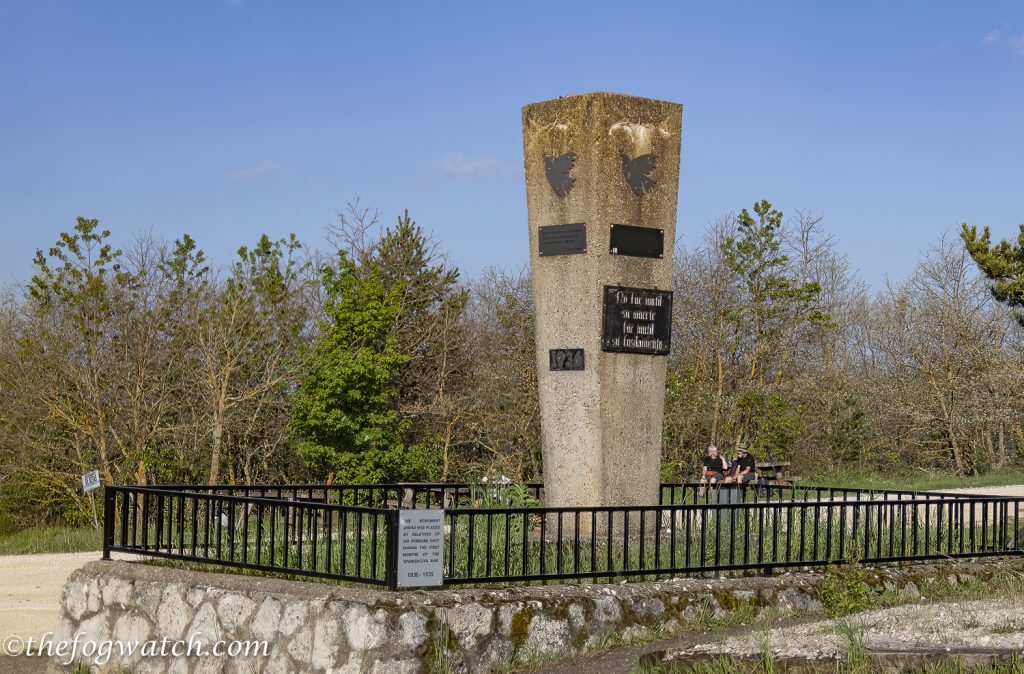
Seeing a group of pilgrims up ahead, we began to pass painted totems before encountering the famous donativo ‘Oasis del Camino’. Here, we were able to buy some bananas to sustain us to San Juan de Ortega. It was a welcome break and a chance to sit down out of the mud for a few minutes. The Donativo stall owner was a delight, larger than life, joking around with all the pilgrims while dispensing his philosophy of life, to a jazz music soundtrack.
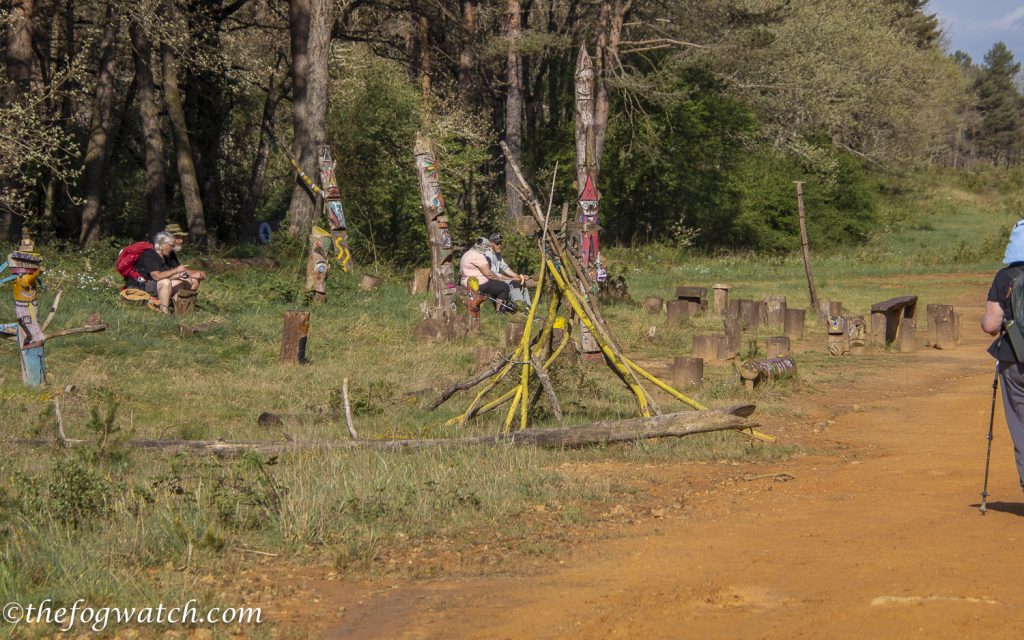
The landscape was folded like a paper plane with a steep descent to a creek and a sharp rise, as though the land had been creased into a right angle.
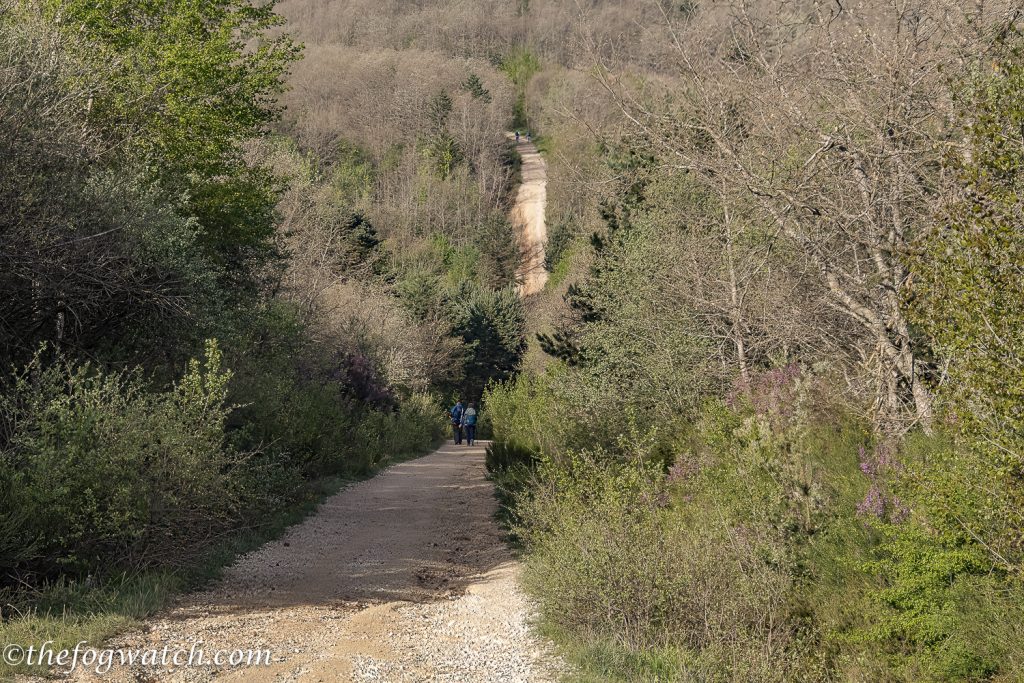
So we had a steep descent, followed by an equally steep rise before seeing the three bells of the church at San Juan de Ortega. The cross above the bells looked like it had been bent from an old coathanger!
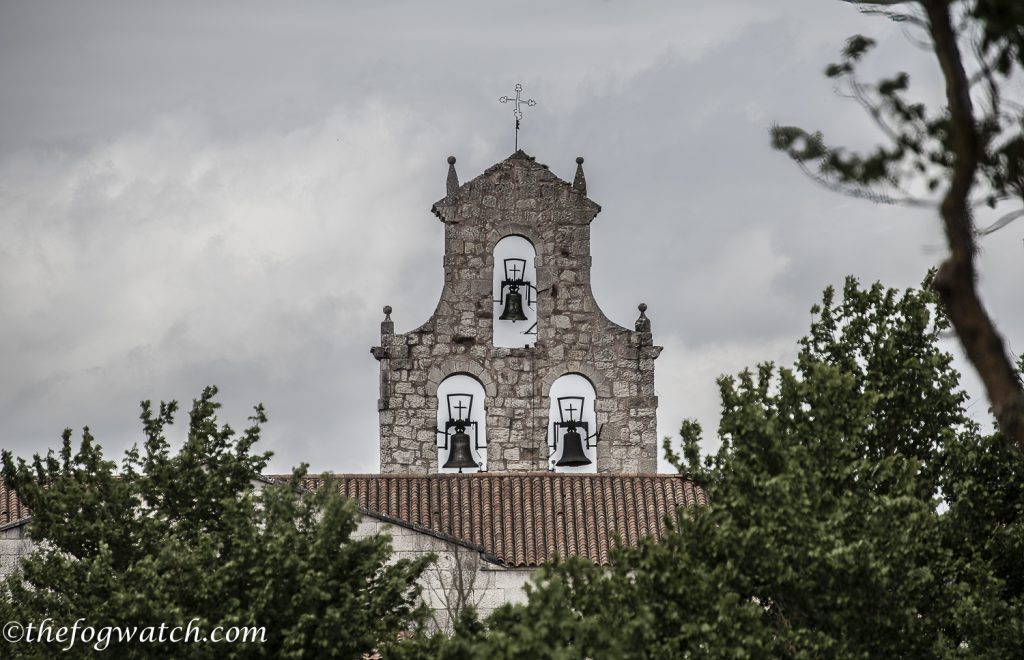
There is an albergue and bar there and we were able to indulge in a decent breakfast. I had the chicken empanada (chicken pie/slice) and a café con leche.
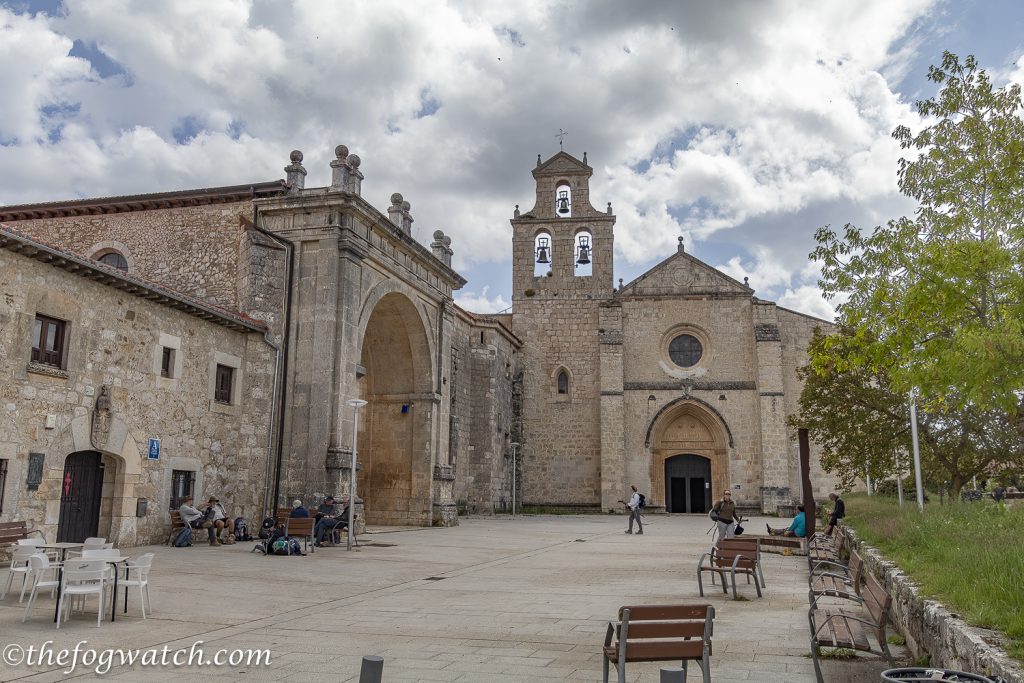
Back on the track we encountered a very colourful lizard just off to one side. It was about a foot long (30cm) and the colours ranged from deep turquoise to bright green and yellow. It was so beautiful!
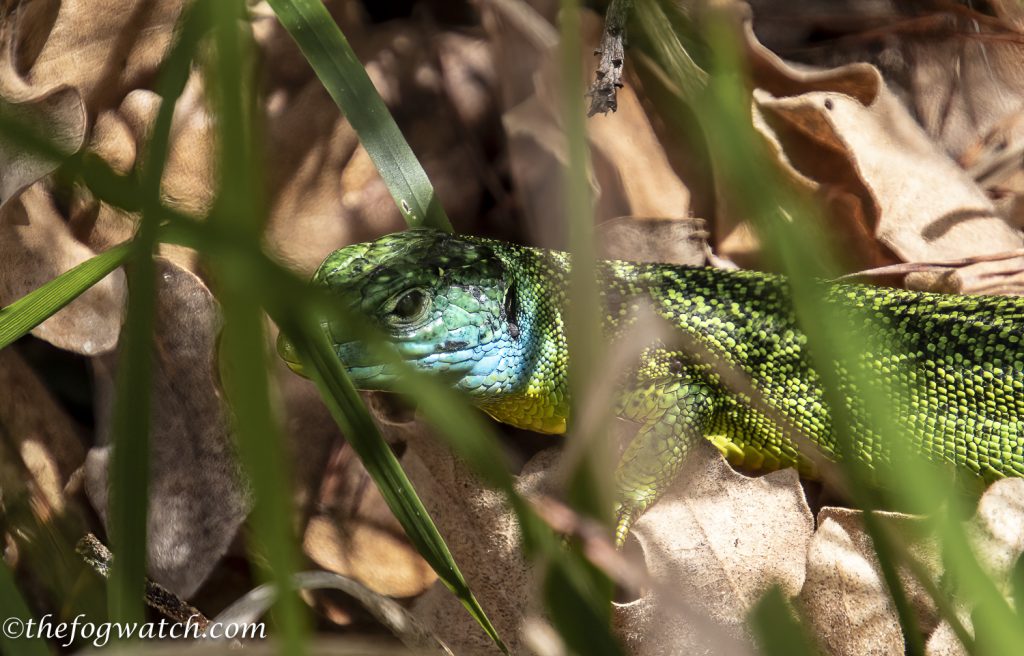
Soon we could see the next town in the distance, revealed as we crested a hill
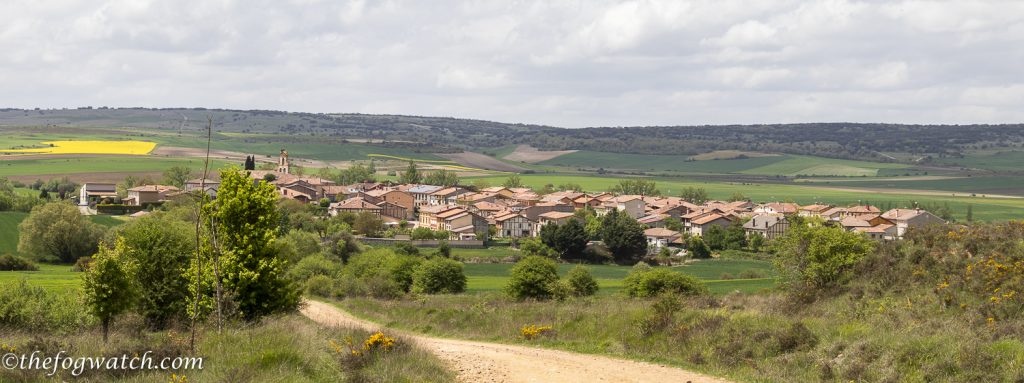
From here it was a fair path to Ages (pronounced Ah-Guess) but of course, I couldn’t resist the chance for an obvious Dad-joke… We stopped for a feed at the delightful El Alquimiste bar.
It is run by an older couple, she is a wonderful character, but today our server was perhaps a bit too meticulous in his preparations. And we were conscious that our Albergue reservation was fragile in the next town. When the tortilla arrived, we quickly downed the orange juice and tortilla and we headed out again — not the relaxing second breakfast we had anticipated.
From here, our pace was quite slow due to the nature of the path.
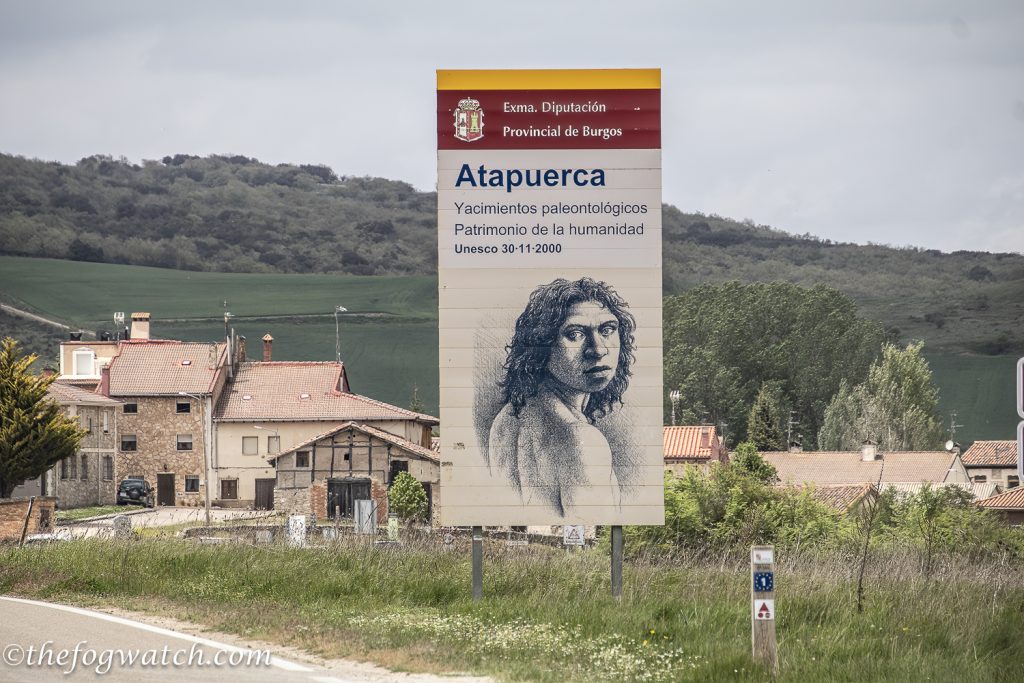
As we descended towards Atapuerca, we saw the megaliths erected recently to commemorate various stages of archeological discovery in the area, on the outskirts of the town.
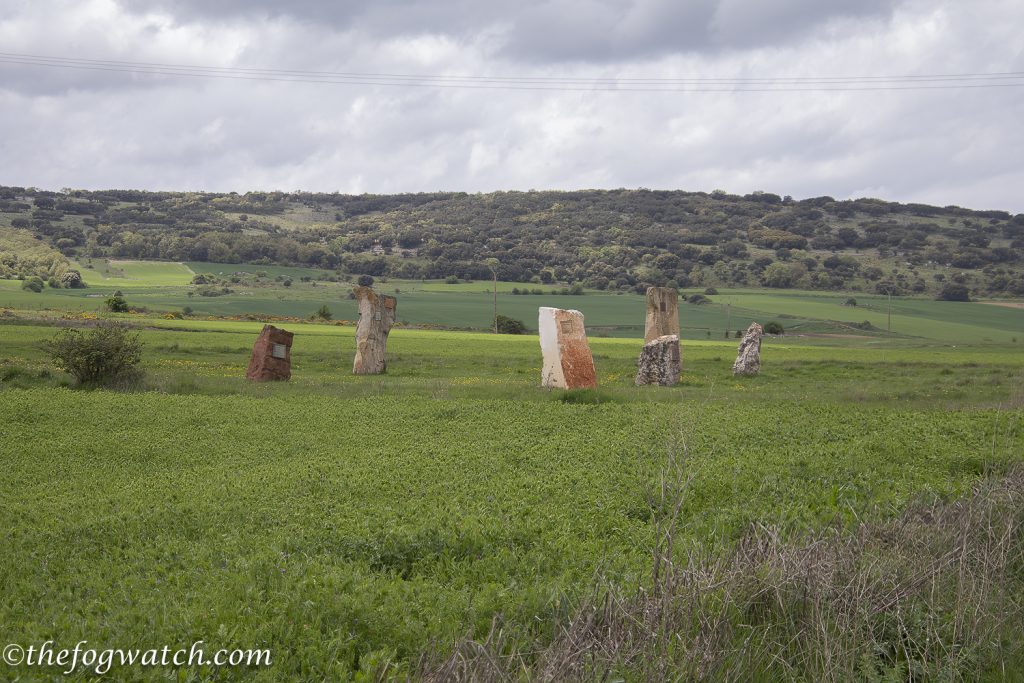
And across to the right, we could see the archeological site itself, one of the most significant in Europe. Unfortunately, you can only visit via a tour from Burgos at the Museum of Human Evolution.
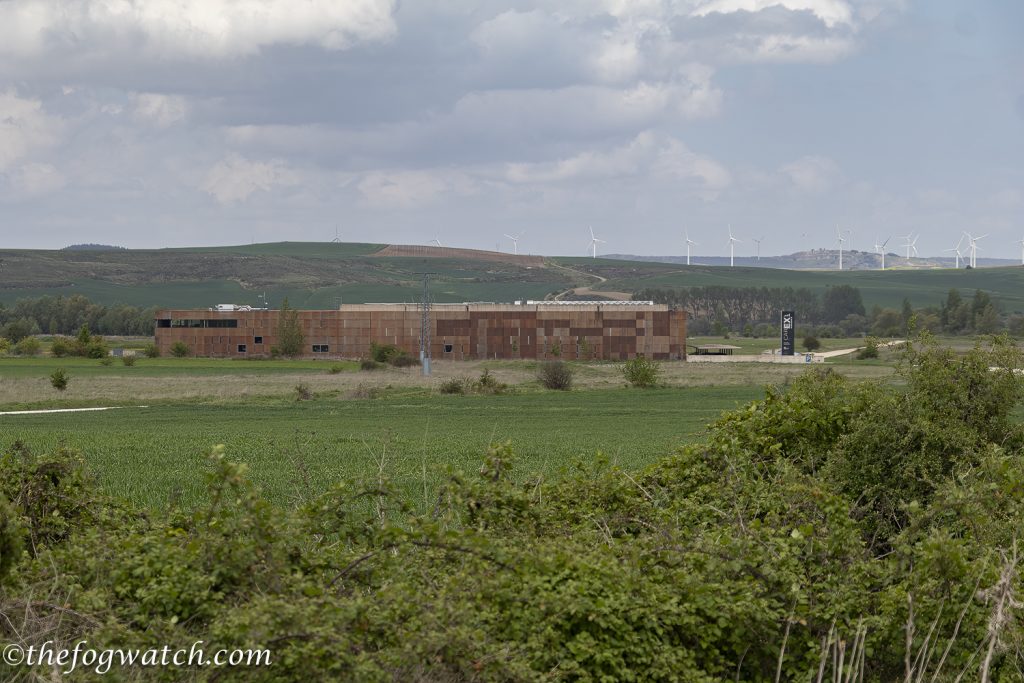
We reached our albergue near the entrance to Atapuerca around 2.30pm. Aside from a couple of pilgrims, there was no-one around. There was a note on Reception to say they had gone to lunch, back at 3.30.
This seemed like a good idea so we headed to a bar, saw available tables, and we waited. Eventually, the bar manager came over and said ‘Completo’, contrary to the evidence before us. No menu, no service — I guess that meant no service for non-locals.
We had the same response at every bar and restaurant in the town. Perhaps being Sunday, meant they only serve locals — which seemed just a little un-Christian of them. No food for pilgrims in Atapuerca on a Sunday. On reflection, the bar owners were likely trying to protect the locals from Covid-19 — we were just emerging from the global pandemic, and there was in places, a natural reticence towards outsiders. It must have been like that or worse during the Plague years in the past. It didn’t make it easier though, we had walked a long day and we were hungry. And no supermercado was open even to buy snacks.
Back at the Albergue, we drank water, and soon the hospitalera arrived and checked us in. We decided to try once more for dinner, but if not, we’ll shower, sleep well, and depart early. There are few places on the Camino where we felt as truly unwelcome as at this place.
I had intended to say something uplifting about how the area has supported human habitation back even before Neanderthal occupation, with the oldest hominids in the area dating back 1.2 million years. But I was distracted and thinking un-pilgrim thoughts. The Stoic philosopher Epictetus reminds us that external things are not in our control, but how we respond to them is our responsibility.
“It is not events that disturb people, it is their judgments concerning them. … So when we are frustrated, angry or unhappy, never hold anyone except ourselves — that is our judgments — accountable.” [Enchiridion Ch5]
Indeed, I had not thought to shop yesterday for some bread and cheese to cover this eventuality, so yes, we could have been better prepared. We showered, washed our clothes, and rested. Around 6.00pm we decided to try once more for dinner, so we headed back to the Cantina de Atapuerca, and sure enough, they were able to provide a ‘menu’ dinner which somewhat restored our spirits.
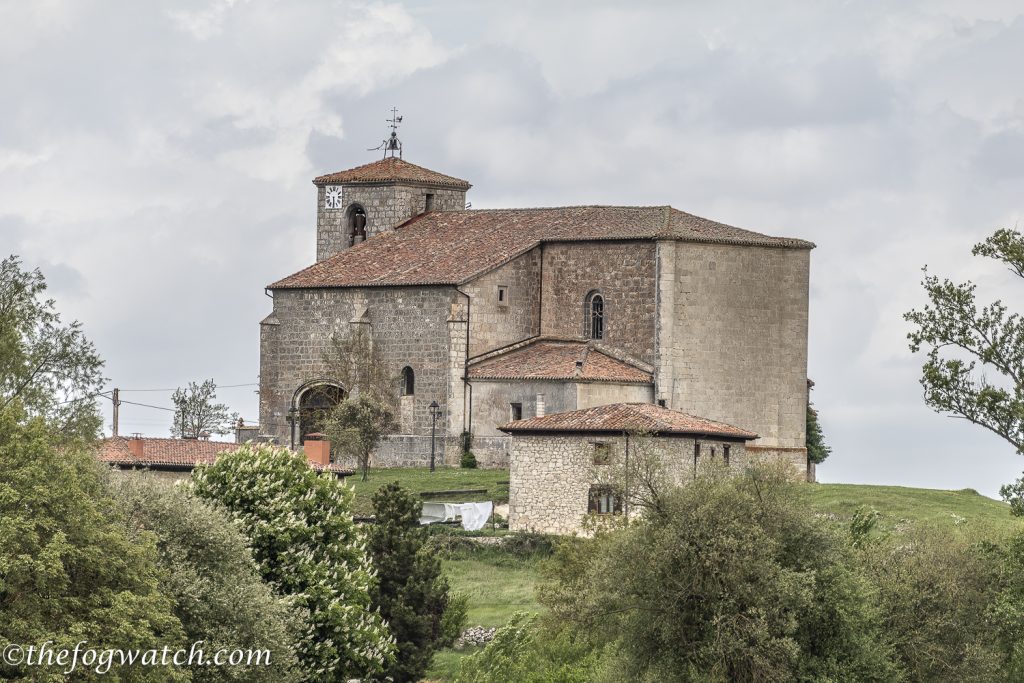
Our treatment aside, Atapuerca has a fascinating history and a truly amazing archeological site. This is a place with deep roots that go back at least 800,000 years for modern humans. And further, through Neanderthals right back to Homo Antecessor, an offshoot of homo erectus. The species appears to be one of the last common ancestors of Neanderthals and modern humans. How extraordinary that this land has sustained humans of various species for such a sustained period of continuous habitation! The Camino has many ‘thin’ places, but this one is perhaps a ‘deep’ place.
And I reflected on the deep history of the Camino — we walk in the footsteps of a thousand years of pilgrims, and in turn, those footsteps were on Roman roads a thousand years before that, and then a deeper level of tracks that led to trade routes across Europe before the Romans, and even before the arrival of modern humans from Africa, the Neanderthals, and Antecessors before them had also lived and loved for hundreds of thousands of years.
The discovery of the fossil remains came about because of the expansion of trade routes in the early C20th. In 1901 a narrow gauge railway was cut into the Sierra Atapuerca limestone hills to transport ore to Burgos. But it should never have been built where it was. A British mining company hired the engineer Pablo Pradera Asterloa. He managed to divert the route to run past limestone quarries in which he had a financial interest. So the railway made a loss for the British company, but it suited the local quarry operators who now had an inexpensive means to transport local stone. By 1910 the railway was making a severe loss, so it was closed and subsequently abandoned. In 1947 the rails were taken up and sold for scrap.
But the Atapuerca railway cutting had exposed a limestone cave system filled with sediment, and, as it turned out, fossil remains. Between 1994 and 1996 several remains of Neanderthals and modern humans were excavated. In 1995, the partial facial skull remains of homo antecessor were discovered. The remains were of a youth around 10-11 years old. The fossils had modern features, such as sunken cheekbones and signs of a projecting nose like a modern human, but also deep brow ridges characteristic of older hominids. This individual was dated to around 780,000 years ago. I would come face-to-face with him in Burgos, but that’s for another story. And so to sleep.
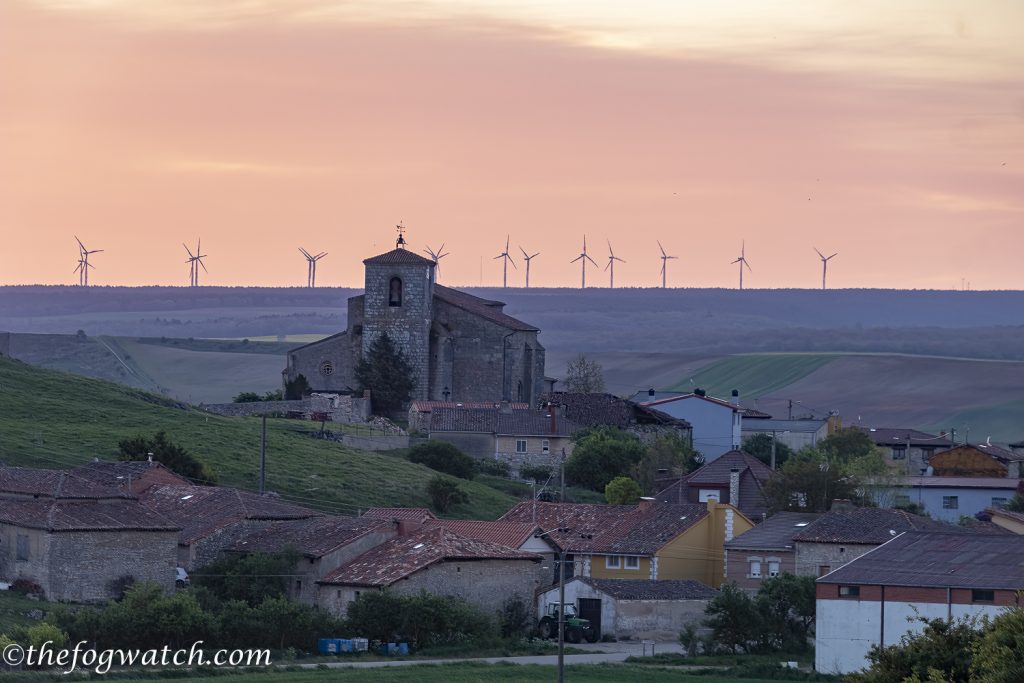
Today, we emerged above the clouds encountering a memorial to victims of the Spanish Civil War. Onward past a Camino oasis in the forest and the timeless alchemy of a bar in Agés to a Camino lesson in patience at Atapuerca where humanity’s deep history lies revealed.

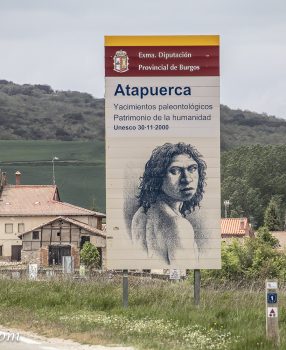
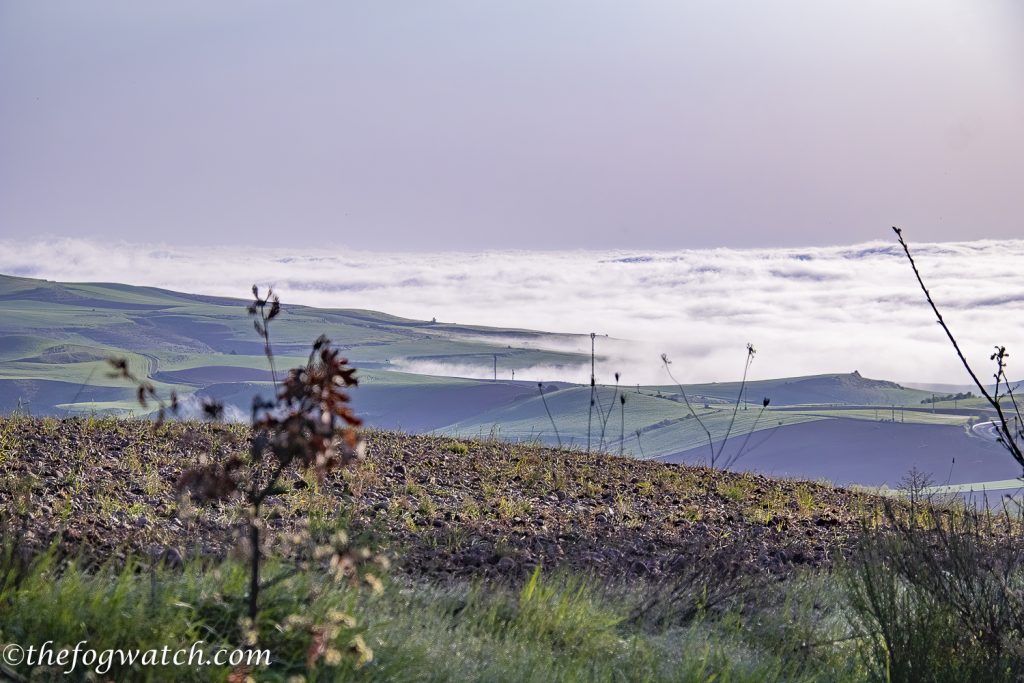
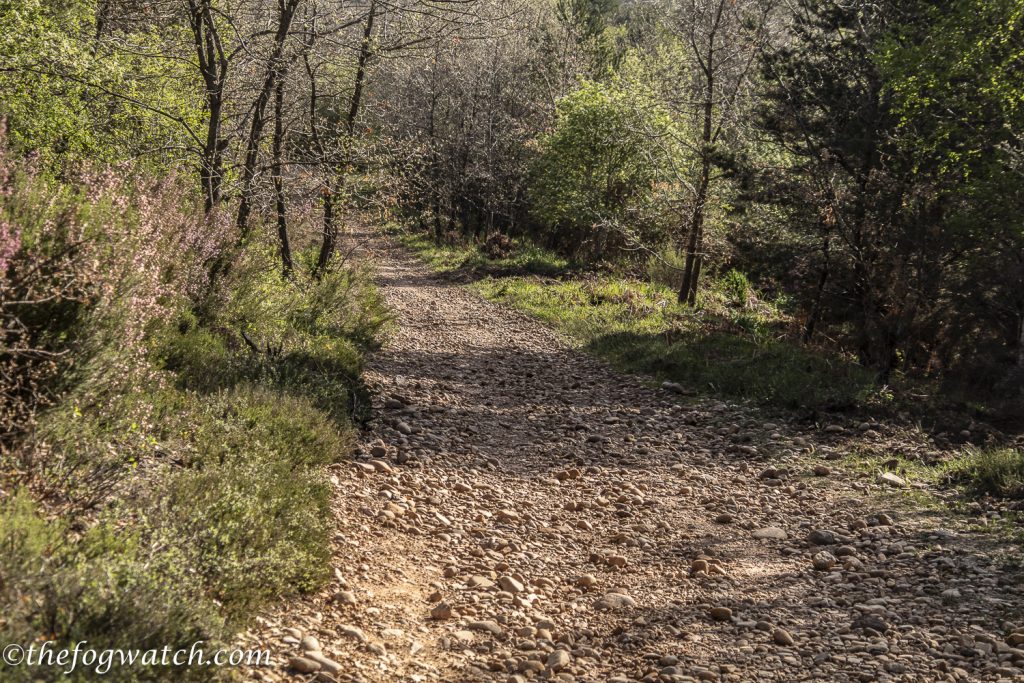
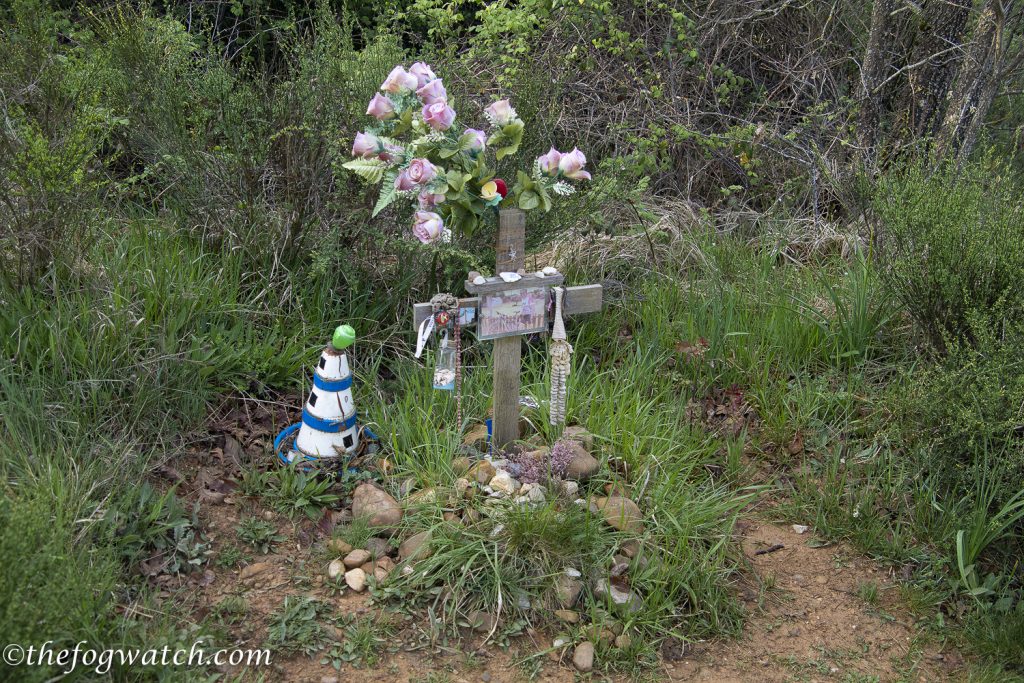
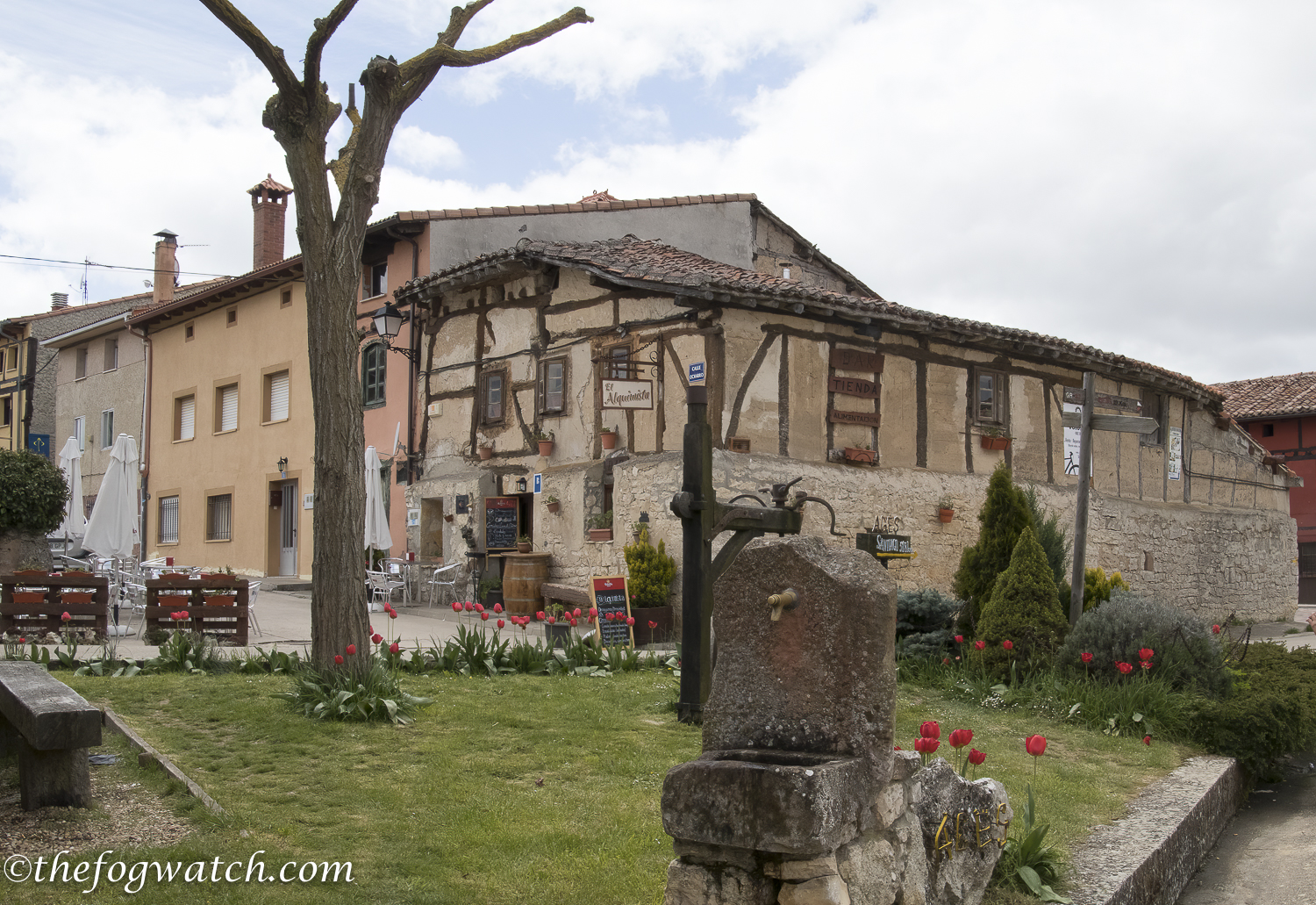
Ah, I remember in the Galil, being at an Olduvai site that apparently went back 1-2 million years; there was a trench we walked through, about 5′ deep, handaxes embedded in the soil everywhere, burlap bags of them above, already labeled. I touched one still in situ, realizing that the last person to touch it was not quite ‘human’ in the modern sense, I felt a kind of satori, awakening at that moment, which has stayed with me…
What a wonderful experience — to have that deep sense of reaching out across time in that way! Thanks for sharing that Cheers Jerry